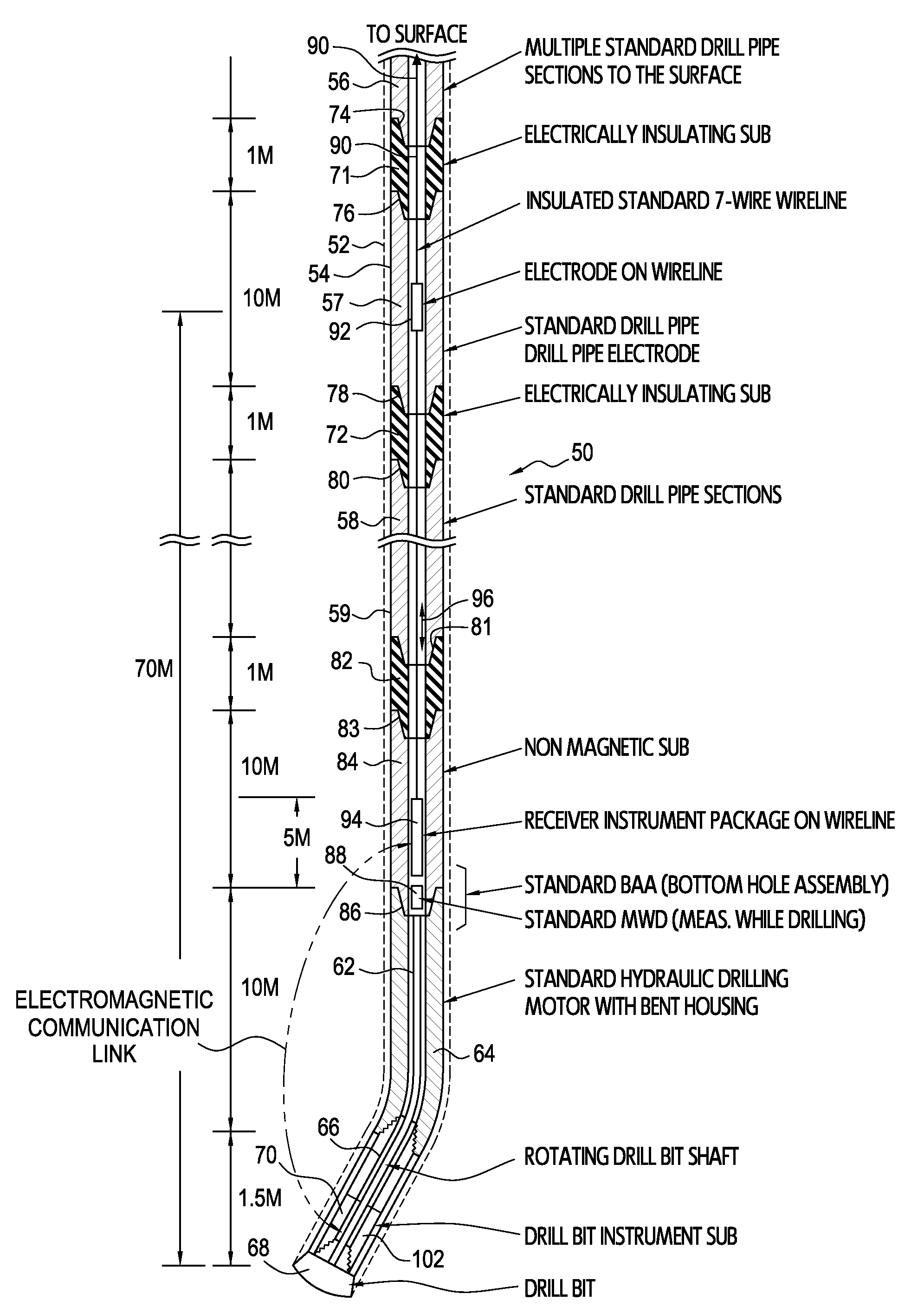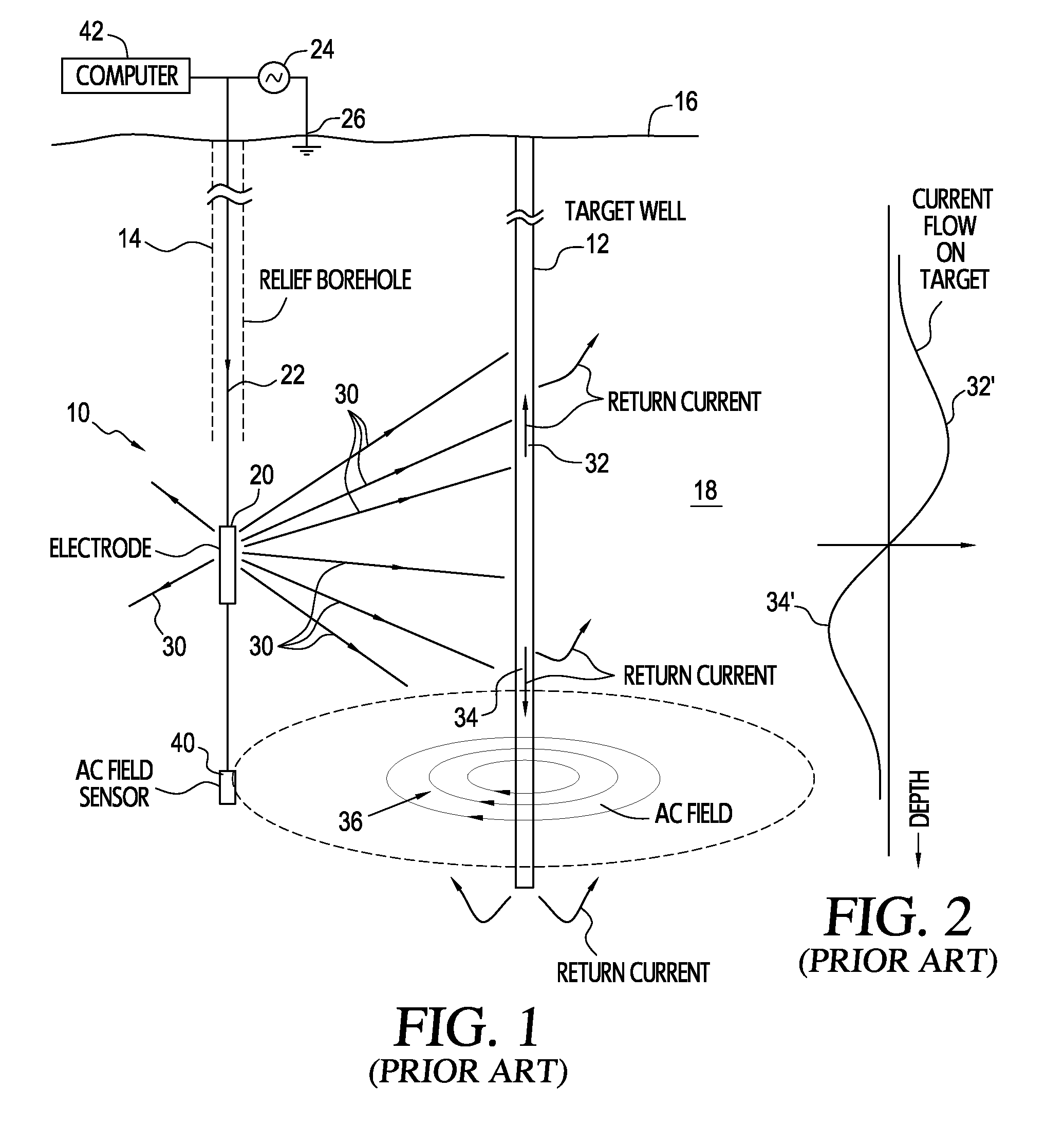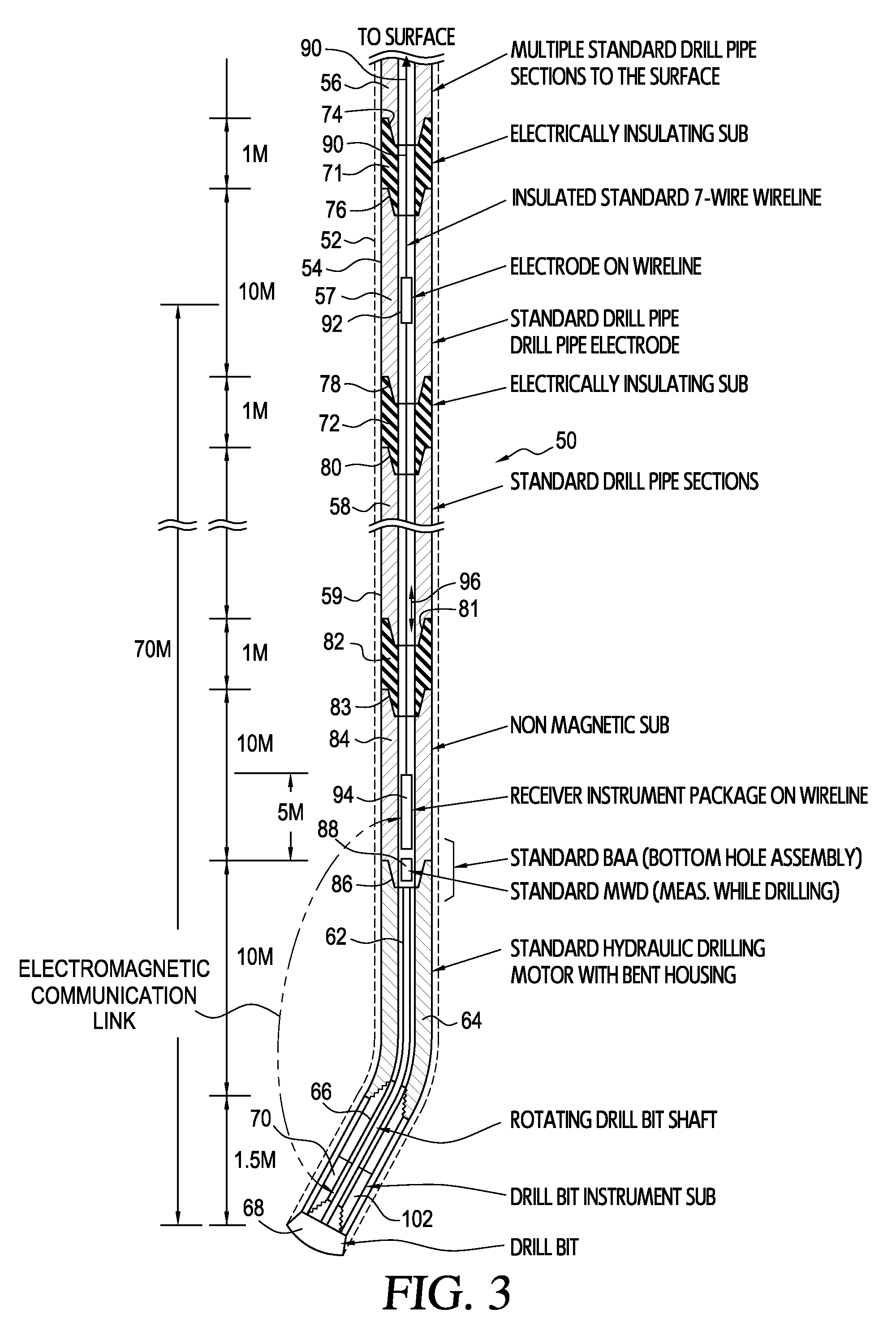Wireline communication system for deep wells
a communication system and wireline technology, applied in the direction of instruments, borehole/well accessories, surveys, etc., can solve the problems of virtually impossible to know the exact location of the well at a given depth, severe difficulties, and difficult to precisely control the path followed by the well, so as to improve the accuracy of the measurement of the decay field and improve the accuracy of the magnetic field measuremen
- Summary
- Abstract
- Description
- Claims
- Application Information
AI Technical Summary
Benefits of technology
Problems solved by technology
Method used
Image
Examples
Embodiment Construction
[0031]Turning now to a more detailed consideration of the present invention, FIG. 1 illustrates, in diagrammatic form, a standard well locating system 10 such as that described in U.S. Pat. No. 4,700,142, the disclosure of which is hereby incorporated herein by reference. In such a system, a target well 12 is to be intersected by drilling a relief borehole, or well, 14 along a path that will intersect the target at a desired depth below the earth's surface 16. The target well is cased, or has a drill string or other electrically conductive material in it, so that electrical current flowing in the earth's formations 18 surrounding the well 12 will tend to be concentrated on that conductive material. An alternating electrical current is injected into the earth by an electrode 20 carried by a logging cable, or wireline 22, which is lowered into the relief borehole 14 after the drill string that is used to drill the relief borehole has been pulled out. The electrode is connected through...
PUM
 Login to View More
Login to View More Abstract
Description
Claims
Application Information
 Login to View More
Login to View More - R&D
- Intellectual Property
- Life Sciences
- Materials
- Tech Scout
- Unparalleled Data Quality
- Higher Quality Content
- 60% Fewer Hallucinations
Browse by: Latest US Patents, China's latest patents, Technical Efficacy Thesaurus, Application Domain, Technology Topic, Popular Technical Reports.
© 2025 PatSnap. All rights reserved.Legal|Privacy policy|Modern Slavery Act Transparency Statement|Sitemap|About US| Contact US: help@patsnap.com



